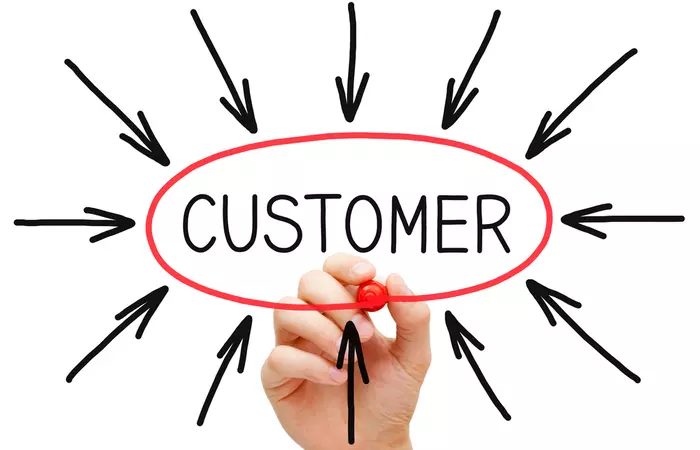
In the dynamic landscape of contemporary business, customer-centric marketing has emerged as a strategic cornerstone that places the customer at the heart of all endeavors. This approach represents a fundamental shift in mindset, where businesses prioritize not just transactions but the holistic needs and preferences of their customers.
By deliberately focusing on delivering tangible value and cultivating robust relationships, organizations aim to go beyond mere transactions, aspiring to forge a dedicated and loyal customer base. In this realm, success is not solely measured by sales figures but by the depth of connections built and the enduring satisfaction of the customers served.
What is Customer-Centric Marketing?
Customer-centric marketing is essentially prioritizing the customer above all else. It’s a business mindset that centers around comprehending and fulfilling the customer’s requirements, preferences, and overall experience across all facets of marketing.
This approach actively involves the customer in decision-making processes, product development, and communication strategies, aiming for more than just transactions. The ultimate objective is to cultivate robust, enduring relationships and nurture customer loyalty, recognizing that putting the customer first is key to sustained success.
For example, if you are promoting a skincare brand, you should partner with beauty marketing agencies to reach specific customers interested in cosmetic and skincare products.
What Are The Major Advantages of Customer-Centric Marketing?
Customer-centric marketing offers several advantages that can contribute to the long-term success and sustainability of a business. Here are some key benefits:
- Customer-centric marketing focuses on building strong, lasting relationships. This emphasis on customer satisfaction often results in lower customer churn rates and increased customer retention.
- Customer-centric strategies often lead to higher CLV as businesses focus on building long-term relationships. Satisfied and loyal customers are more likely to make repeat purchases over an extended period.
- By understanding customer preferences and behaviors, businesses can allocate resources more efficiently. This includes targeted marketing efforts, product development, and customer service initiatives.
- Understanding customer needs allows businesses to identify opportunities for cross-selling complementary products or up-selling higher-value offerings, leading to increased revenue per customer.
Best Tips For Customer-Centric Marketing
Here are five tips for effective customer-centric marketing:
1- Understand Your Customers
Develop ideal customer profiles to understand your target audience better. By considering demographics such as age, gender, location, and income, you gain a foundational understanding of their socio-economic context.
Behavioral patterns act as the dynamic brushstrokes, capturing the evolving preferences and tendencies that shape their interactions with products or services.
Together, these elements construct a comprehensive profile, guiding businesses to tailor their strategies with precision, ensuring that every initiative aligns harmoniously with the distinctive tapestry of their audience’s identity.
2- Leverage Personalization
Tailor your marketing messages and content to individual customers or segments. Personalization can include personalized emails, product recommendations, and targeted promotions.
You should also leverage data analytics to track customer behavior and use this information to provide relevant and timely content.
In the context of an online fashion retailer, personalization involves tailoring the customer experience across various touchpoints. For instance, the website dynamically displays products based on individual browsing and purchase history, personalized email campaigns offer related items, and targeted social media ads showcase products aligned with customer interests. Segmentation allows for tailored promotions and recommendations, and the website provides personalized product suggestions based on the customer’s preferences.
A customer’s journey is mapped to include follow-up communication, interactive quizzes gather style preferences, and preference centers empower customers to set communication preferences. These personalized strategies collectively enhance the overall customer experience, fostering engagement and loyalty.
3- Engage in Two-Way Communication
To cultivate open and transparent communication with customers, businesses can leverage various channels, such as social media, surveys, and feedback forms. Social media platforms provide direct avenues for interaction, enabling businesses to engage with customers in real-time, address queries, and showcase a transparent view of their operations.
Additionally, implementing surveys and feedback forms allows companies to collect valuable insights into customer preferences and satisfaction levels.
The key lies not just in gathering feedback but in actively listening to customer sentiments. Responding promptly to feedback, whether positive or critical, demonstrates a commitment to customer satisfaction and underscores the value placed on customer opinions.
By embracing this two-way communication approach, businesses can build trust, strengthen relationships, and continually enhance the overall customer experience.
4- Provide Exceptional Customer Service
To uphold exemplary customer service standards, you should apply the best customer retention strategies. For instance, investing in comprehensive training for staff is paramount. This training equips employees with the skills to adeptly handle customer inquiries and resolve issues, fostering a positive customer experience.
Employing multiple communication channels, including phone, chat, email, and social media, further enhances accessibility and responsiveness. This multichannel approach ensures that customers can engage with the company through their preferred means, making the customer service process seamless and reinforcing the commitment to addressing customer needs promptly and effectively.
5- Build Customer Loyalty Programs
Implementing a robust customer loyalty program involves rewarding customers for their allegiance through special incentives such as exclusive discounts, offers, and early access to new products.
For example, if you are starting a bakery shop, introduce a tiered loyalty structure. This way you can encourage customers to deepen their engagement with the brand over time. This tiered approach typically offers escalating benefits as customers move up the loyalty ladder, fostering a sense of appreciation and motivating sustained loyalty.
Incentivizing customers not only acknowledges their commitment but also creates a win-win scenario, where loyal customers enjoy exclusive perks while businesses cultivate a devoted customer base.
Conclusion
Adopting a customer-centric marketing approach is imperative for businesses aiming to thrive in a competitive landscape. By prioritizing the needs and preferences of customers, companies can forge lasting connections, build loyalty, and enhance overall customer satisfaction.





